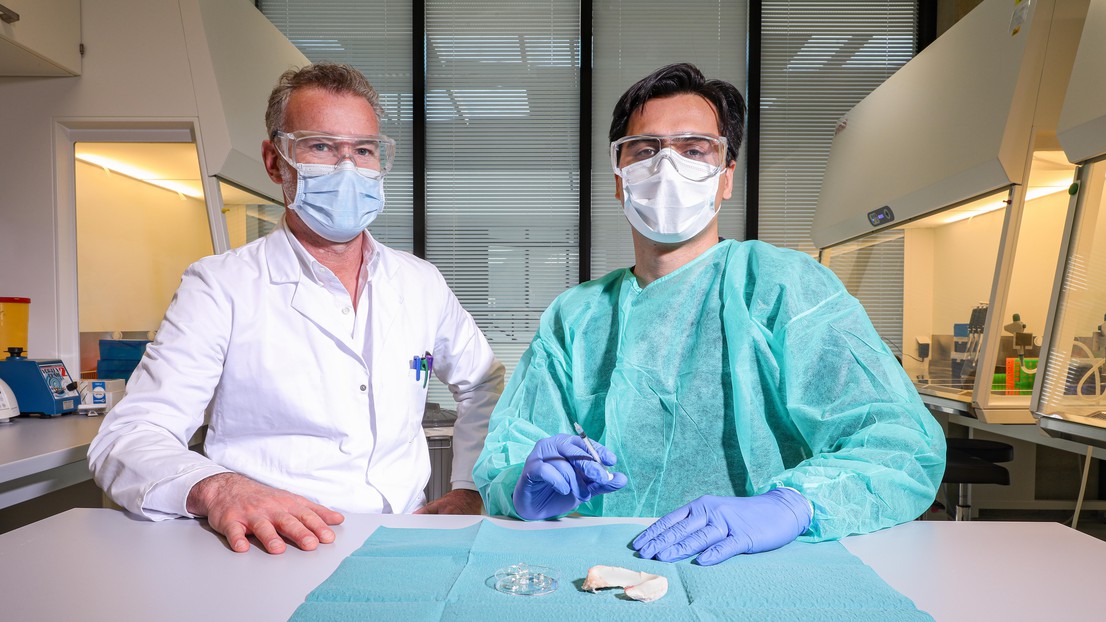Tokyo (SCCIJ) – Scientists of the Swiss Federal Institute of Technology Lausanne (EPFL) have developed a versatile injectable gel that can repair tissue ruptures resulting from an accident or trauma. The Swiss National Science Foundation supported their research at the Laboratory of Biomechanical Orthopedics with a grant.

Dominique Pioletti and Peyman Karami with their new tissue repair gel (©Alain Herzog 2021 EPFL).
Proper healing
Human soft tissues can be torn during a sports, car, or home accident. In such cases, surgeons can have a hard time binding the tissue back together, as stitches often do more harm than good. According to Dominique Pioletti, the head of the Laboratory of Biomechanical Orthopedics at EPFL’s School of Engineering, such surgeries don’t always produce optimal outcomes because the repaired tissue usually doesn’t heal properly. This tends to be the case for openings in cartilage and the cornea, for instance.
Researchers around the world have been trying for years to develop an adhesive for soft tissue that can withstand the natural stresses and strains within the human body. Pioletti’s group has now come up with a novel family of injectable biomaterials that can bind to various forms of soft tissue. Their bio-adhesives, in the form of a gel, can be used in a variety of injury-treatment applications.
Sticks like glue
The hydrogel produced at LBO is made up of 85% water and has two key advantages: it can be injected anywhere in the human body, and it demonstrates high intrinsic adhesion with no extra surface treatment. “What makes our hydrogel different is that it changes consistency while providing high adhesion to soft tissues,” says Peyman Karami, a postdoc at Pioletti’s lab who has developed the gel during his Ph.D. “It’s injected in a liquid form, but then sets when a light source is applied, enabling it to adhere to surrounding tissue.”
The scientists’ hydrogel works through an entirely new design that allows for independent control of its mechanical and adhesive properties. The result is a versatile hydrogel that doctors can use as glue for soft tissue throughout the human body. The scientists took the base polymer and modified it with the compounds that play an important role in tissue adhesion.
Inspired by mussels
The first material is known as Dopa and derived from mussels. “Dopa is what lets mussels attach firmly to any kind of surface – organic or otherwise,” says Pioletti. The second is an amino acid that our bodies make naturally. “The advantage of our hydrogel compounds is that, unlike some medical adhesives, they don’t interfere with the body’s chemical reactions, meaning our hydrogel is fully biocompatible,” says Karami.
The scientists have now received an Innosuisse grant to study potential orthopedic applications in association with surgeons at the Lausanne University Hospital. They hope to be able to launch their hydrogel on the market within the next five years.
Text: EPFL News/Valérie Geneux





























